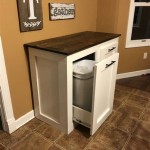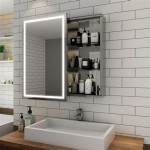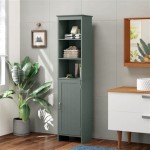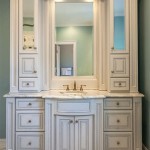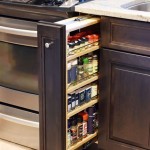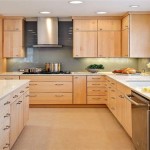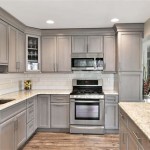Homemade Cabinet Hardware Jig: A Comprehensive Guide
Installing cabinet hardware, such as knobs, pulls, and hinges, often requires precision to ensure uniformity and a professional finish. While commercially available jigs expedite this process, crafting a homemade cabinet hardware jig offers a cost-effective and customizable solution, particularly for unique cabinet configurations or budget-conscious projects. This guide provides a detailed explanation of how to construct and utilize homemade jigs for various cabinet hardware installations.
Understanding the Need for a Cabinet Hardware Jig
The primary purpose of a cabinet hardware jig is to create repeatable and accurate hole placements for installing cabinet knobs, pulls, and hinges. Without a jig, the risk of misaligned hardware dramatically increases, leading to uneven spacing, crooked pulls, and doors that don't close properly. These inconsistencies not only detract from the aesthetic appeal of the cabinetry but can also compromise its functionality and longevity. Using a jig ensures that all hardware is installed in the same location on each cabinet door and drawer, guaranteeing consistency and a professional appearance.
Furthermore, a jig simplifies the installation process, making it faster and easier, especially when dealing with a large number of cabinets. It eliminates the need for repeated measurements and reduces the chance of errors. This is particularly beneficial for individuals with limited woodworking experience, as it provides a reliable template for accurate drilling.
Designing and Building a Basic Knob and Pull Jig
A simple jig for installing knobs and pulls can be constructed from readily available materials, such as plywood, MDF, or hardwood. The design involves creating a template with precisely drilled holes that correspond to the desired location of the hardware. The key to creating an accurate jig lies in precise measurements and careful execution.
Materials Required:
- A piece of wood (plywood, MDF, or hardwood) at least 6 inches wide and 12 inches long. The dimensions can be adjusted based on the specific needs of the project.
- Drill press or hand drill. A drill press offers superior accuracy.
- Drill bits sized to match the mounting screws of the knobs and pulls.
- Measuring tape or ruler.
- Pencil or marking tool.
- Clamps.
Construction Process:
- Determine Hole Placement: Begin by measuring the desired location for the knob or pull on the cabinet door or drawer. This measurement should be precise and consistent across all cabinets. For pulls, measure the distance between the two mounting screws.
- Mark the Jig: Transfer these measurements onto the piece of wood. Use a ruler and pencil to mark the exact locations for the holes. Double-check all measurements to ensure accuracy. A slight error at this stage will be replicated across all installations.
- Drill the Holes: Clamp the wood securely to a work surface. Using a drill press or hand drill, carefully drill the holes through the wood at the marked locations. Ensure the drill bit is perpendicular to the wood surface to create clean, straight holes. Use a drill bit appropriate for the hardware screw size.
- Test the Jig: Before applying the jig to the cabinets, test it on a scrap piece of wood that is similar in thickness to the cabinet doors or drawers. This allows for a final check of the hole placement and ensures the jig is functioning as intended.
Creating a More Advanced Adjustable Jig
While a basic jig is suitable for uniform hardware placement, an adjustable jig offers greater flexibility when dealing with varying cabinet styles or hardware sizes. An adjustable jig allows for quick and easy adjustments to the hole spacing, eliminating the need to create multiple jigs for different hardware configurations.
Materials Required:
- Two pieces of wood (plywood or MDF), one serving as the base and the other as the adjustable slider.
- T-track hardware (available at most woodworking supply stores).
- Knobs or screws for securing the adjustable slider.
- Drill press or hand drill.
- Drill bits sized to match the mounting screws of the knobs and pulls.
- Measuring tape or ruler.
- Pencil or marking tool.
- Clamps.
Construction Process:
- Install T-Tracks: Cut the T-track to the desired length and securely attach it to the base piece of wood. The T-track will serve as a guide for the adjustable slider. Ensure the T-track is parallel to the edge of the base.
- Create the Adjustable Slider: Cut the second piece of wood to fit within the T-track. The slider should move smoothly along the track without excessive play.
- Drill the Holes on the Slider: Determine the range of hole spacings needed for the project. Drill multiple holes along the slider, spaced at regular intervals. These holes will accommodate the mounting screws for the hardware.
- Secure the Slider: Use knobs or screws to secure the slider to the base at the desired location. This allows for precise adjustments to the hole spacing.
- Test and Refine: Test the jig on a scrap piece of wood and make any necessary adjustments to ensure accurate hole placement. Fine-tune the slider mechanism to ensure smooth and reliable operation.
Adapting the Jig for Hinge Installation
Installing cabinet hinges accurately is crucial for proper door alignment and function. A dedicated jig for hinge installation streamlines this process and ensures consistent results. This typically involves creating a template that precisely aligns with the mortise (recessed area) required for the hinge.
Materials Required:
- A piece of wood (plywood or MDF) slightly larger than the hinge.
- Router with a template guide.
- Mortise chisel.
- Drill press or hand drill.
- Drill bits sized to match the hinge screws.
- Measuring tape or ruler.
- Pencil or marking tool.
- Clamps.
Construction Process:
- Prepare the Template: Trace the outline of the hinge onto the piece of wood. This will serve as the template for routing the mortise.
- Route the Mortise: Using a router with a template guide, carefully rout out the area within the traced outline. The depth of the mortise should match the thickness of the hinge. Multiple passes may be required to achieve the desired depth.
- Square the Corners: Use a mortise chisel to square the corners of the routed mortise. This ensures a tight and accurate fit for the hinge.
- Drill Pilot Holes: Drill pilot holes for the hinge screws through the template. These holes will guide the screws and prevent the wood from splitting.
- Test and Refine: Test the jig on a scrap piece of wood to ensure the hinge fits properly within the mortise. Make any necessary adjustments to the template or mortise depth.
The homemade hinge jig allows for repeatable and accurate mortise creation, leading to properly aligned and functioning cabinet doors. This jig streamlines the installation process, saving time and effort while ensuring a professional-quality result.
Considerations for Different Cabinet Styles and Hardware Types
The design and construction of a cabinet hardware jig should be tailored to the specific cabinet style and hardware being used. Framed cabinets, for example, may require a different jig design compared to frameless cabinets. Similarly, the size and shape of the hardware will influence the dimensions and features of the jig.
Framed vs. Frameless Cabinets:
- Framed Cabinets: These cabinets have a face frame that surrounds the door opening. The jig must account for the thickness of the face frame when determining hole placement.
- Frameless Cabinets: These cabinets do not have a face frame, allowing for easier installation of hardware. However, precise alignment is still crucial to ensure consistent results.
Hardware Types:
- Knobs: A simple jig with a single hole is typically sufficient for installing knobs.
- Pulls: A jig with multiple holes, spaced according to the pull's mounting screw distance, is necessary. Adjustable jigs are particularly useful for pulls with varying screw spacings.
- Hinges: A dedicated hinge jig, as described above, is recommended for accurate mortise creation.
Before building a jig, carefully consider the specific requirements of the project and choose a design that will best accommodate the cabinet style and hardware being used. Customizing the jig to meet these needs will ensure optimal results and a professional finish.
Tips for Accurate and Efficient Jig Usage
Even with a well-crafted jig, proper usage is essential for achieving accurate and consistent results. Following these tips will help ensure that the jig is used effectively and efficiently.
Clamping: Securely clamp the jig to the cabinet door or drawer before drilling any holes. This prevents the jig from shifting during the drilling process, which can lead to misaligned hardware. Use clamps that are appropriate for the material being worked on and avoid over-tightening, which can damage the cabinet or jig.
Drilling Technique: Use a drill press whenever possible for superior accuracy. If using a hand drill, ensure the drill bit is perpendicular to the surface being drilled. Avoid applying excessive pressure, which can cause the drill bit to wander. Drill slowly and steadily to create clean, straight holes.
Pilot Holes: Drill pilot holes before installing screws. This prevents the wood from splitting and makes it easier to drive the screws straight. Use a drill bit that is slightly smaller than the diameter of the screw.
Consistency: Maintain consistent pressure and speed when drilling each hole. This will help ensure that all holes are drilled to the same depth and diameter. Consistency is key to achieving uniform results across all cabinets.
Regular Inspection: Periodically inspect the jig for wear and tear. Check the holes for enlargement or damage and replace the jig if necessary. A worn or damaged jig can compromise the accuracy of the installation.
By following these tips, users can maximize the effectiveness of their homemade cabinet hardware jigs and achieve professional-quality results with every installation.

Simple Homemade Jig For Cabinet Door Pulls Our Home From Scratch

Diy Drawer Pull Jig

Simple Homemade Jig For Cabinet Door Pulls Our Home From Scratch

This Jig Is The Quickest Most Consistent Way To Install Cabinet Hardware

Free Drawer Pull Mounting Jig Woodworking Plan

Let S Make A Cabinet Hardware Jig Flipping The Flip

Levoite Original Cabinet Hardware Jig Template For Handles And Knobs

Fitting Cabinet Handles Simple Diy Jig

The Most Foolproof Way To Install Cabinet Hardware How Handles

Drawer Pull Drilling Jigs
Related Posts

